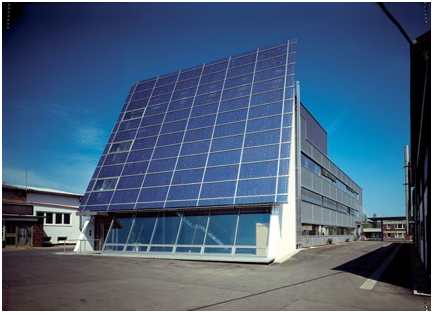| As the name suggests, it is the integration of Photovoltaics into the building envelope. Here the PV system provides two functions; it acts as the building skin and it produces electricity. |
In many cases of Building Integrated Photovoltaics, the PV panel replaces the conventional building cladding material. In effect, building integrated photovoltaic systems are on the whole cheaper when compared to stand-alone PV systems when we consider the cost of building materials which has been offset.
The main advantage of BIPVis that a wider area can be applied to generate solar energy than the rooftop solar systems. Here, generation is at the point of use. As a result, transmission losses areavoided. Just like the other solar PV Systems, BIPV systems too require little or no maintenance.
BIPV is still an emerging segment in PV systems. Products in this segment are based on either thin-film or crystalline technologies. It’s better to choose thin-film technologies while integrating them in buildings. This is because of thin-film technologies offer better aesthetic and flexible structural characteristics.
Research predicts that the BIPV market will grow to a $26 billion industry by 2022 as compared to a $3 billion industry in 2015.
Let’s look at an interesting BIPV project:
Here we have a large area PV plant on the façade of an industrial building. The wide building area available has been wisely used to produce solar energy:

 Skip to content
Skip to content
